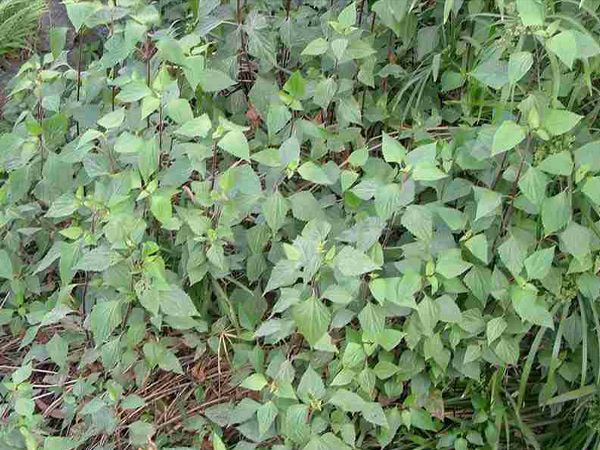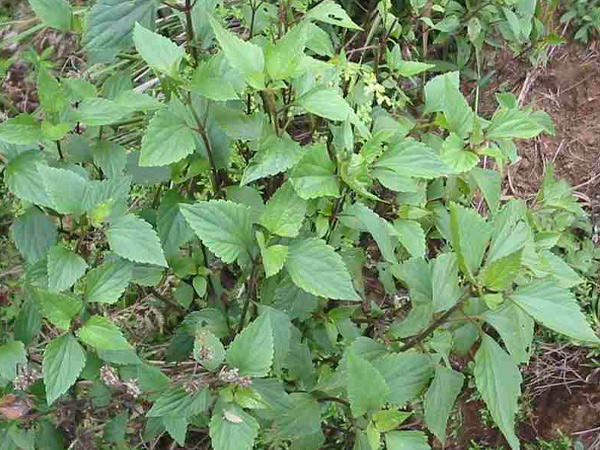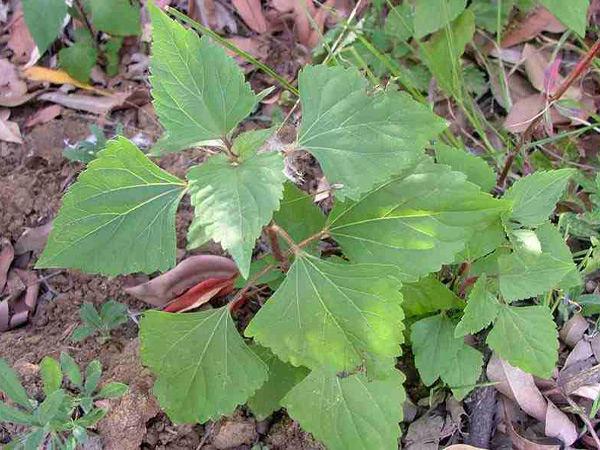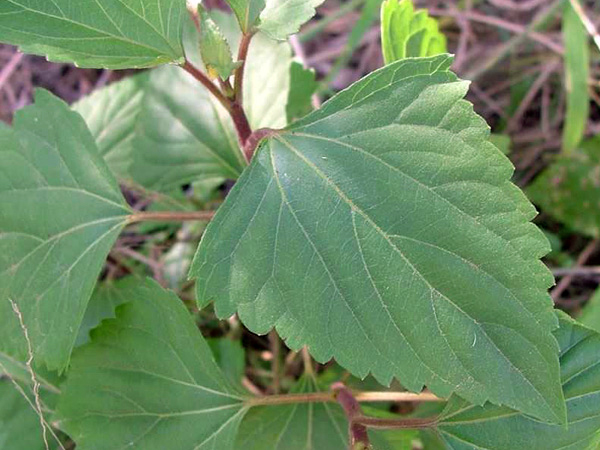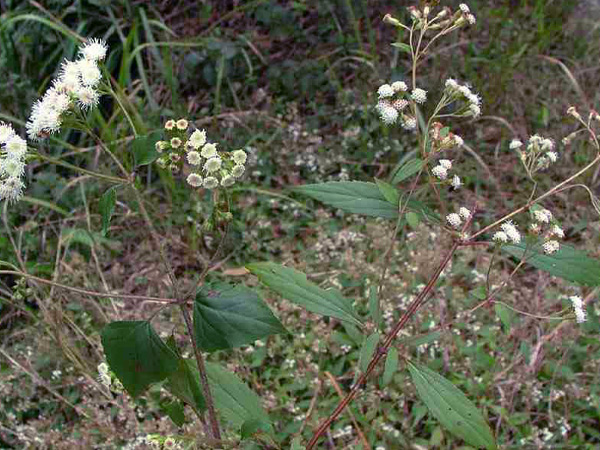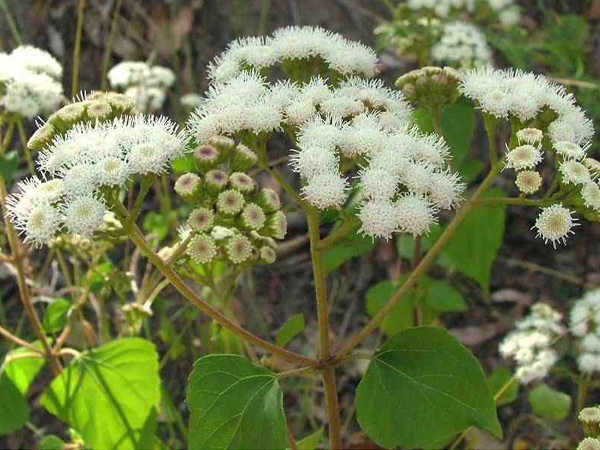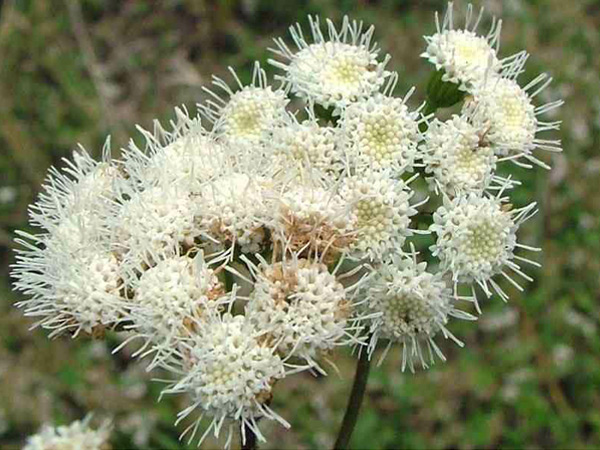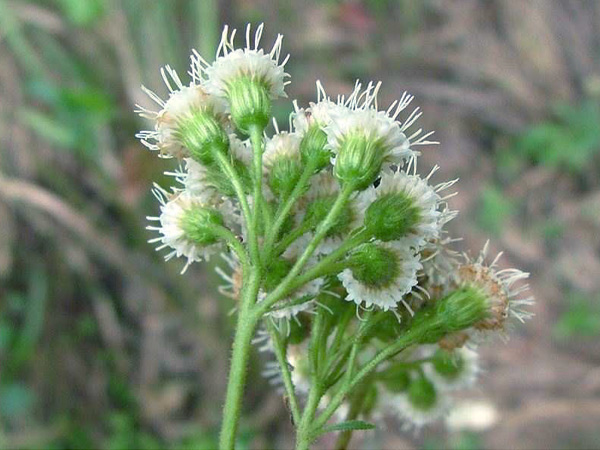Weeds
Crofton weed – Ageratina adenophora
Crofton weed is a rapid-spreading shrub. It is a nuisance in many areas along the eastern coast of Australia.
Profile
How does this weed affect you?
Crofton weed is a rapid-spreading weed that has become a nuisance in many areas along the eastern coast of Australia. It is particularly invasive on cleared land that is not grazed, such as public reserves, and causes particular problems for horse owners.
Places where Crofton weed is commonly found include:
- land cleared but not revegetated with pasture
- roadsides and waste areas
- ungrazed small holdings
- State forests
- National parks
- abandoned banana plantations
- fencelines.
Once established, seedlings tolerate shade and grow rapidly. In this way, small infestations of Crofton weed rapidly increase in size unless controlled.
Crofton weed reduces the ecological value of bush land, lowers crop yields and reduces the carrying capacity of grazing land.
The weed spread rapidly during the 1940s and 1950s and it was reported that in some areas dairy farmers and banana growers abandoned their holdings!
The area of Crofton weed infestation has now been substantially reduced through control strategies.
It is poisonous to horses
Horses may preferentially graze the plant even when ample feed is available. Access to Crofton weed for as little as eight weeks can cause sickness.
The first sign of Crofton weed poisoning is coughing, made more pronounced by exercise. If horses are not removed from infested areas, further lung and possible heart damage occurs, leading to shortness of breath even when at rest. Death from respiratory failure is the eventual result, with affected horses often suddenly collapsing and dying during work.
Treatment of Crofton weed poisoning is unlikely to reverse the damage, so early detection of poisoning and removal from the weed infestation is essential. If you suspect poisoning, seek veterinary advice. Poisoned horses may never again be capable of work.
It is possible that Crofton weed is at its most poisonous during or soon after flowering. Pollen inhalation could be a factor in poisoning.
It is a weed of non-agricultural areas
Crofton weed is an aggressive invader of public amenity land such as State forests, national parks and nature reserves, as well as public utility easements such as railway embankments.
Where is it found?
Crofton weed is a native of Mexico. It is present as a weed in India, Sri Lanka, the Canary Islands, Jamaica, mainland United States, Hawaii, Fiji, New Zealand and Australia. Since its escape from ornamental cultivation in Australia around 1900, it has become widespread in Queensland coastal areas and on the New South Wales North Coast, and as far south as Wollongong. Isolated infestations also occur on the northern and central tablelands. The weed has been present in the Sydney region for more than 30 years and has spread rapidly in this area since the early 1970s. It is now a problem weed, especially on small farms where horses are kept.
How does it spread?
Mature Crofton weed plants can produce between 10 000 and 100 000 seeds per year. Seeds are very light (25 000 seeds/g) and are windborne over long distances to invade previously non-infested areas.
The seeds require light to stimulate germination so that invasion commonly takes place on bare, disturbed sites and only rarely on heavily vegetated areas.
What does it look like?
Crofton weed is a member of the Asteraceae or daisy family. It is an erect, perennial shrub with numerous chocolate-brown woody stems emanating from an underground crown and reaching a height of 1–2 m. It has broad, slightly crinkled, trowel-shaped, toothed leaves with chocolate-coloured petioles (leaf stems). It produces white flowers in spring. Crofton weed and mistflower are sometimes mistaken for each other. Table 1 distinguishes between the two species.
| Crofton weed | Mistflower | |
|---|---|---|
| Botanical name | Ageratina adenophora | Ageratina riparia |
| Growth habit | Erect stems up to 2m tall | Sprawling stems, prostrate to 30cm tall |
| Leaf shape | Trowel-shaped, broad-toothed | Narrow, elongated, toothed |
| Flowers | The plants have similar flowers | |
What type of environment does it grow in?
Crofton weed and its close relative, mistflower (A. riparia), infest large areas of the coast, especially steep, well-drained land where annual rainfall is more than 1500 mm and where there are few or no frosts. The seeds require light to stimulate germination so that invasion commonly takes place on bare, disturbed sites and only rarely on heavily vegetated areas.
Places where Crofton weed is commonly found include:
- land cleared but not revegetated with pasture
- roadsides and waste areas
- ungrazed small holdings
- State forests
- National parks
- abandoned banana plantations
- fencelines.
Acknowledgements
Dr Chris Bourke, Senior Research Scientist, Orange Agricultural Institute.
References
Trounce B and Dyason R (2003). Crofton weed. Agfact P7.6.36. NSW Agriculture, Orange.
Control
Weed lifting
Perennials (plants that germinate and seed through many years) should have their major root structures lifted out entirely to prevent re-shooting.
Using a shovel, weeding fork, mattock or garden fork, loosen the dirt surrounding the plant’s roots or underground structures (bulbs, corns, tubers, rhizomes, etc).
Carefully pry the plant out of the ground using the tool as a lever to help lift the whole plant out of the ground.
Weed chipping
Annual species (plants that germinate and seed within 12 months) can be chipped using a chipping hoe to sever the stem from the roots below the crown of the plant. Ensure that this takes place before the production of flowers, fruit and seed.
Plant disposal
Be sure to remove all of the root structure including any corms, tubers, bulbs or rhizomes.
Remove any dirt from the plant’s root structures.
All plant material should be hung up or left to dry on a raft made of twigs, as leaving plants on the ground can lead to them re-shooting.
Place the weeds in your green waste bin or a garbage bag and then dump in the general waste bin. Do not put them in the compost as the vegetative material can remain viable and you could end up spreading the weeds in your garden.
